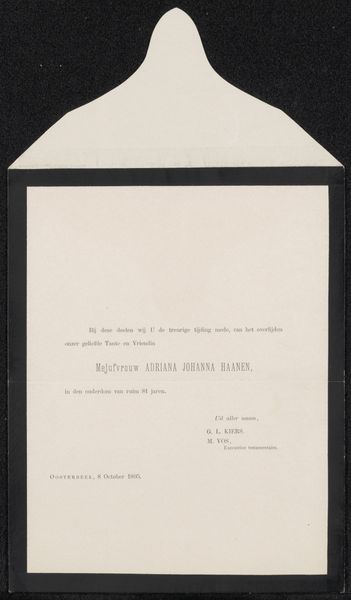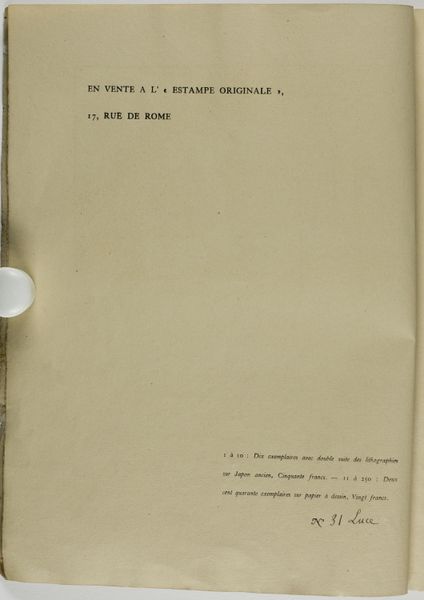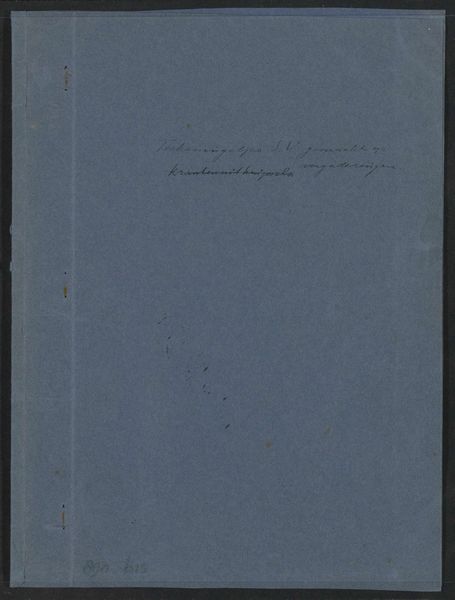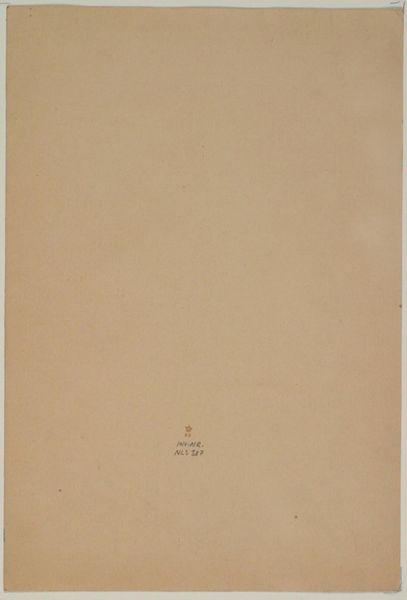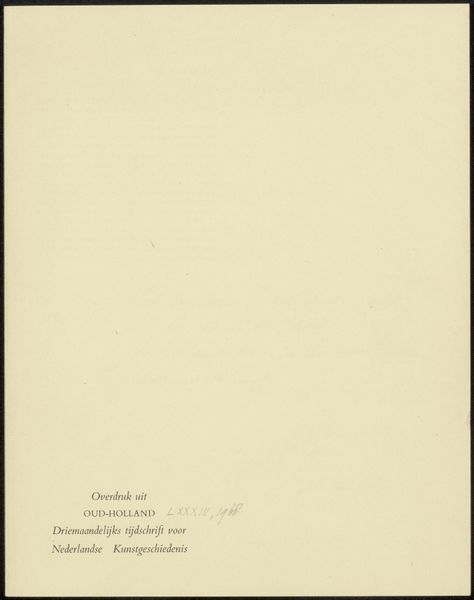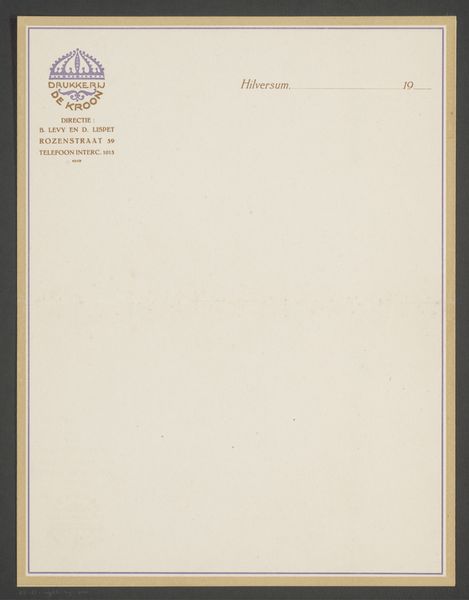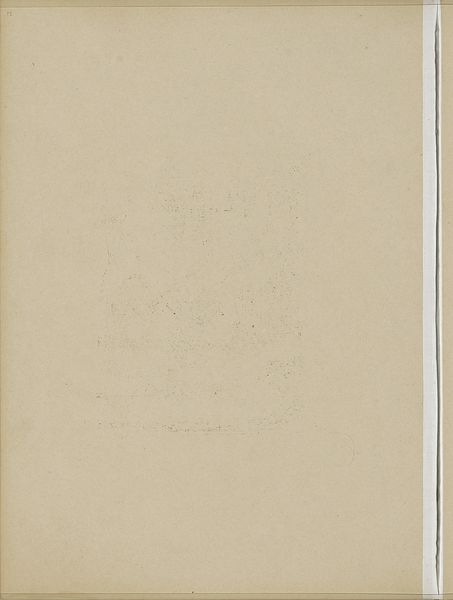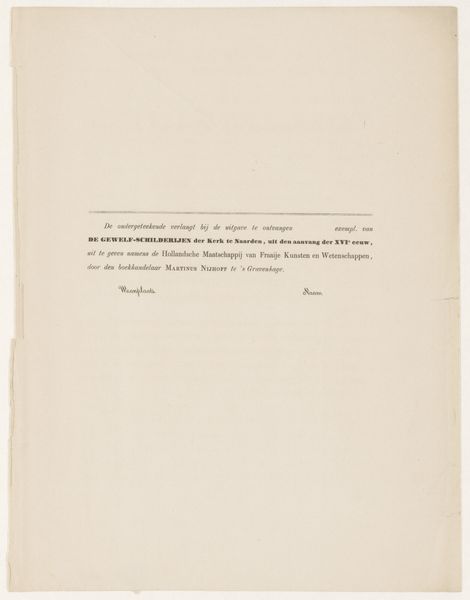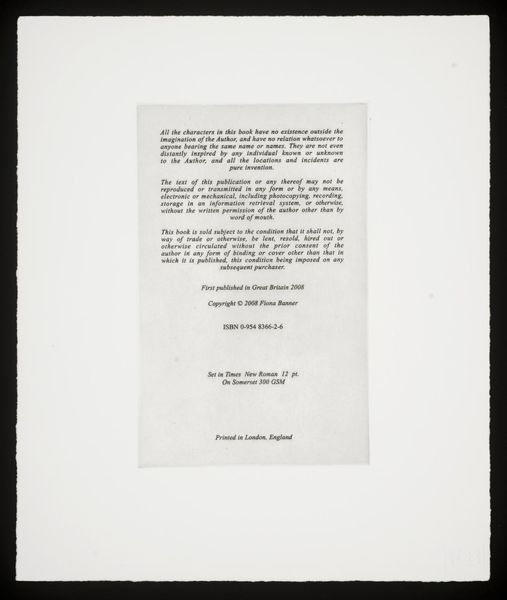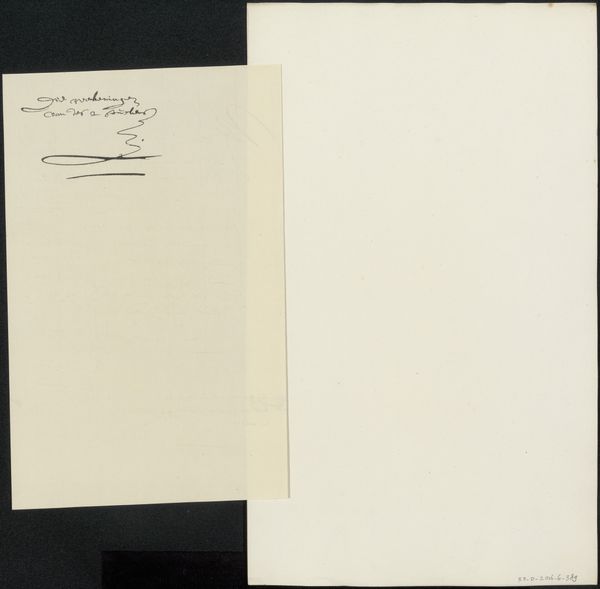
graphic-art, print, paper, typography
#
graphic-art
# print
#
paper
#
text
#
typography
#
monochrome
Copyright: National Gallery of Art: CC0 1.0
Curator: Here we have "Colophon," a print by Charles Knowles, created around 1957. What are your first impressions? Editor: Well, it's strikingly simple. I'm immediately drawn to the monochrome palette and the sparseness of the image. There’s something very zen about all this empty space and the small block of text hovering near the bottom. Curator: Right, "Colophon" is a textual statement on a physical artwork; in it, Knowles emphasizes his own involvement in the entire process—from engraving to printing and selling. Editor: So he is the sole producer and distributor. It really drives home the idea of the artist as a craftsman, engaged in every aspect of the artwork's creation and dissemination. But it also reads like a matter-of-fact, practical description rather than highfalutin self-aggrandizement. I like that. Curator: Exactly. And by explicitly mentioning the Putney School, it embeds itself within the context of education and the handmade, hinting at an almost socialist aesthetic. It elevates labor by revealing his individual and direct contribution. Editor: Ah, so there's that intentional intersection of text as artwork. To call specific attention to the printing and distribution is such an overt act of humility—almost humorous. "Yes, I did ALL of it myself." Curator: Though produced using the methods of graphic art, Knowles presents us here with something much closer to fine art, disrupting typical boundaries between those mediums. Editor: It’s so minimal, it makes you wonder if the empty space *is* the art! Is the quiet space amplifying this artist’s declaration? A reminder, I suppose, of where art truly resides—the hand that made it! It brings me joy. Curator: It invites the audience to think about the making of things. "Colophon" really exemplifies a critical turn in art history and production. Editor: Agreed. Looking at it now, there is something refreshing in the frank simplicity—the direct declaration of "I made this, start to finish"—almost like a quiet act of rebellion against an art world increasingly distanced from process. Curator: It's a quiet, very handmade revolution on paper! Editor: Well put. An ode to the labor behind the art, hidden in plain sight.
Comments
No comments
Be the first to comment and join the conversation on the ultimate creative platform.
